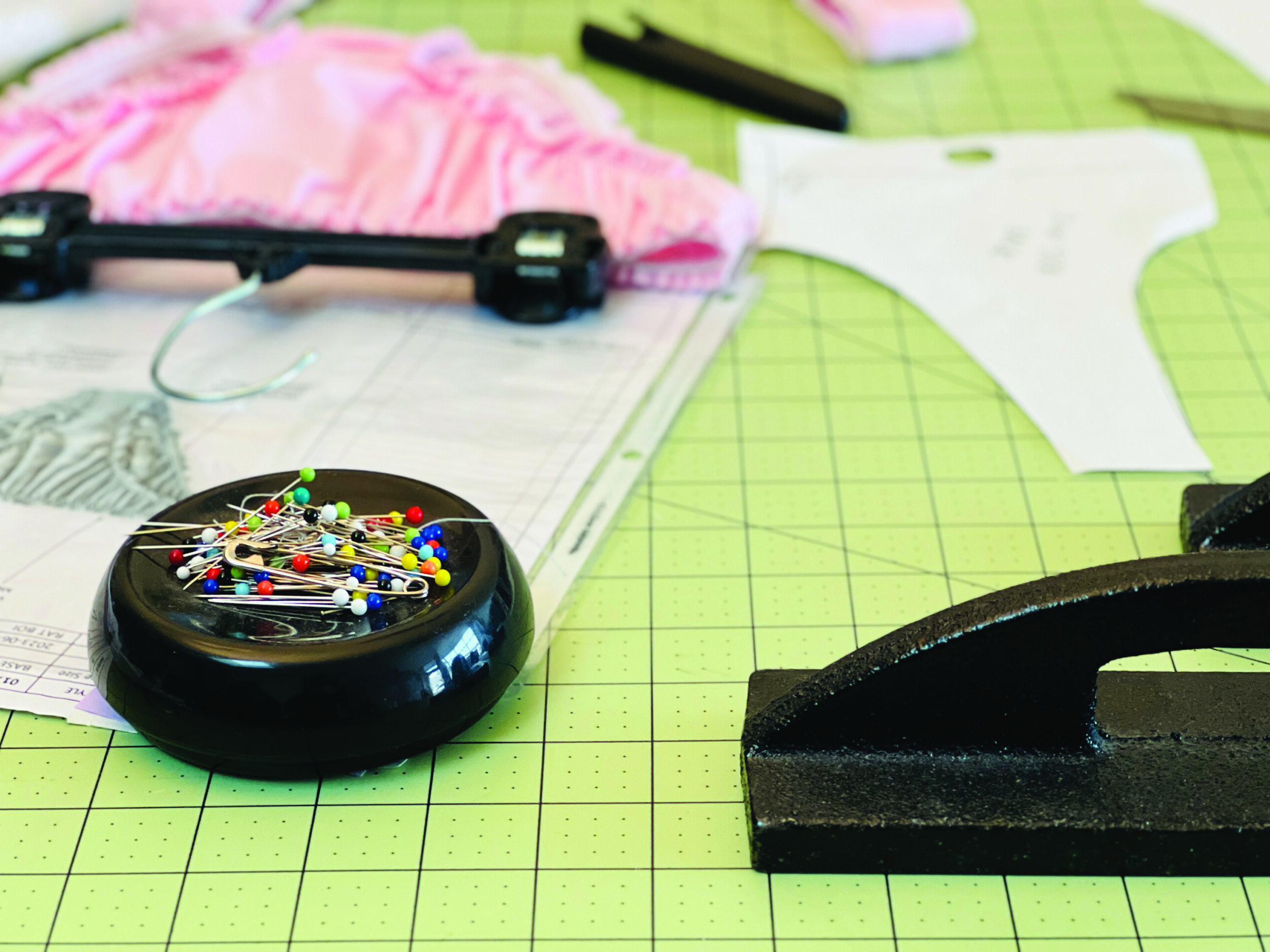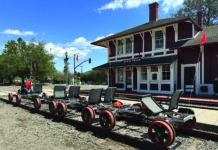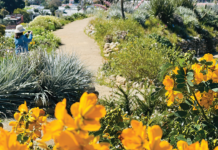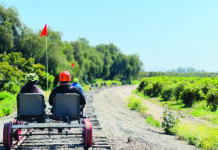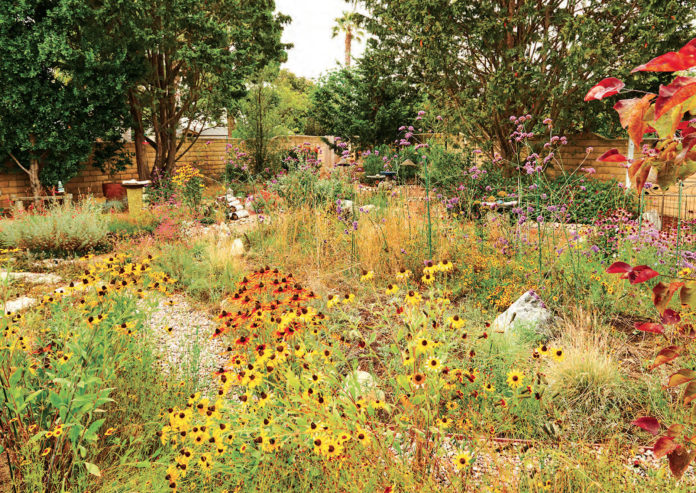By Alex Wilson | Photos by Luis Chavez
journey to England provided inspiration for an Oxnard family to replace their backyard lawn with a more natural and seasonal meadow-style garden.
Catherine Lewis and her husband Wayne joined a garden tour with the Pacific Horticulture Society during 2018. It became their No. 1 bucket list goal to replace their turf lawn with a meadow, and they are now realizing it.
The tour called “Chelsea and the English Gardens of the Bohemians” featured lavish gardens that included meadow areas where plants are free to follow their natural cycles of bloom and decay, and also attract abundant wildlife.
Meadow gardens are also becoming a growing trend among people seeking a more environmentally conscious alternative to turf lawns and more formal gardens. In addition to suburban backyards, they’re also popping up in more urbanized areas, as city dwellers seek a greater connection to nature in their everyday lives.
Common features of meadow gardens include the planting of mostly native species, walking paths, perennial grasses and wildflowers that attract pollinators. They can thrive in areas where the soil is poor, and use far less water than other types of gardens.
Lewis says she was enthralled with the different approach to gardening she learned about in England compared with what she was accustomed to seeing in California.
“I think Britain is a lot more proactive in being wild. They’re going from less formal to more natural things. We didn’t know the possibilities, and once we saw a meadow we realized it was possible,” said Lewis. “We weren’t really aware of how there could be as much green, and as much support for butterflies, pollinators and songbirds.”
They were joined on the trip to England by their gardener friend Richard Sanders, who owns a business called Sanders Landscape and Design. Lewis had admired his gardening, and what she describes as his “zen” temperament for some time.
She was thrilled to bring Sanders on board to help realize their dream project. “Once we saw a meadow we realized it was possible, but not with our limited expertise. An enthusiasm for gardening doesn’t always bring you success,” said Lewis. “So he became our designer and my mentor. I’m the worker bee.”
They discussed the potential challenges and the best plants for the particular climate. “He seeded based on what would flourish and bring pollinators to the table,” said Lewis. “When the seeds and the grasses started to come in, it was just eye-poppingly amazing.”
Sanders says the garden they were inspired to create in Oxnard is much different than the lawns and desert cactus displays that are prevalent in the city.
“Meadows and most of the gardens I work on take some getting used to, because they do go through different phases. Most American sensibilities about a garden are much tidier and people want them to be always at their peak, or always blooming or always green. A meadow is more how nature grows. It has seasons and cycles, and it’s not tidy,” said Sanders. “There are always butterflies and birds. There’s a lot to grab your attention.”
He says creating a meadow garden has several benefits over lawns and other types of landscaping.
“To me it’s much more interesting because it’s a complex system because of the variety. It will change over time as you get volunteers of different plants popping up in different areas. So it’s a changing, evolving landscape rather than something that’s static. There’s nothing more static than a lawn.”
According to Lewis, the yard has always posed landscaping challenges. It’s on an unusual, triangle-shaped lot on a third of an acre, drier and shadier than those of their neighbors. They previously tried to maintain the lawn but grew frustrated during years of drought.
The transformation began in the autumn of 2018, after the Lewises returned from that inspirational trip to England. They first planted a purple flowering redbud tree to entice songbirds. Next the lawn was removed. They then contoured the yard without using any amendments, which can be used to modify soil conditions. They created rock pathways and began planting other species such as ruby grass, hummingbird sage, purple moor grass and California poppies.
They were surprised by unusually heavy rains that winter, which threatened to turn their California meadow into an Irish bog. Instead, the storms resulted in an explosion of red and orange blooms.
By May 2019, they were mesmerized by that year’s unusually heavy display of painted lady butterflies that stopped off in the garden. They also witnessed the return of monarch butterflies. Five hummingbird feeders in the yard were increasingly ignored by the tiny and colorful birds, which instead chose from a wider variety of food sources such as lupines and California bluebells.
Lewis says the seasonal changes they witnessed due to the more wild gardening approach are a big part of its charm.
“It requires a tolerance for understanding that it’s seasonal. So there’s going to be decline and then there’s going to be renewal, which makes the reward even sweeter,” said Lewis.
While there are challenges posed by creating a meadow-style garden, Lewis says it’s not as hard or expensive to create as people might expect.
“Look at it as a long term process, not instantaneous, like you click your fingers and it appears,” said Lewis. “A lot of friends who don’t garden say ‘Look at all the work.’ But people go to the gym and don’t think of it as work. When you’re out in the yard there’s just that peace and solitude of working in the earth.”
Lewis says they enjoy their garden every day and it brings them a sense of peace and tranquility.
“To be out in it is truly restorative,” said Lewis. “There’s something to be said for that zen moment when you clear your head and you’re just out listening to those sounds of birds, looking at the beauty of it, and deciding what to edit and what to encourage and cultivate and nurture more of next year, to get an even better result.”













